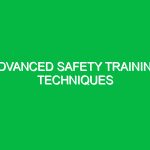Introduction to Safety Management in Remote Locations
Safety Management in Remote Locations is a critical aspect of the Health, Safety, and Environment (HSE) domain, particularly as industries expand their operations into less accessible areas. These locations often present unique challenges that necessitate specialized safety protocols. Whether it’s a mining site deep in the wilderness, a construction project on a remote island, or an oil rig miles offshore, the need for effective safety management becomes paramount.
Remote locations can be characterized by limited access to emergency services, unpredictable weather conditions, and a higher likelihood of accidents due to isolation. As someone who has spent years working in various remote settings, I have witnessed firsthand the impact of inadequate safety measures. In one instance, a colleague sustained an injury due to improper safety training and lack of preparedness. This experience underscored the importance of robust safety management practices tailored to these unique environments.
This article will delve into the hazards associated with remote locations, examine safety precautions and best practices, and highlight relevant regulations and standards that guide safety management in such areas.
Understanding Potential Hazards and Risks
In remote locations, the potential hazards are diverse and can be categorized into several types:
Environmental Hazards
Natural elements pose significant risks. Weather conditions can change rapidly, leading to storms, floods, or extreme temperatures. For example, a construction team working in the Arctic faced severe wind chills that made outdoor work hazardous. Workers were unprepared for the harsh conditions, resulting in frostbite cases.
Operational Hazards
The nature of work itself can introduce risks. Heavy machinery, cranes, and other equipment are often operated in these locations. In one incident at a remote mining site, a mechanical failure resulted in a serious accident. It highlighted the necessity for regular maintenance checks and operator training to ensure that equipment is functioning safely.
Human Factors
Human error is a major contributor to accidents. Isolation can lead to fatigue, distraction, and even mental health challenges. In a remote oil field, workers reported feelings of anxiety and depression due to extended periods away from their families. This emotional strain contributed to lapses in focus, increasing the risk of accidents.
Geographical Risks
The geographical features of remote locations, such as cliffs, dense forests, or icy terrains, can pose hazards. Workers at a remote wind farm faced challenges navigating through rugged landscapes, leading to trips and falls. Proper risk assessments should be conducted to identify these geographical hazards effectively.
Safety Precautions and Best Practices
To mitigate the hazards associated with Safety Management in Remote Locations, organizations must adopt comprehensive safety measures. Here are several actionable strategies:
1. Thorough Risk Assessment
Conducting a detailed risk assessment before commencing operations is essential. This involves identifying all potential hazards, evaluating the risks, and implementing controls. Engaging workers in this process can provide valuable insights, as they often have firsthand knowledge of the challenges they face.
2. Training and Preparedness
Regular training sessions are crucial. Workers should be trained not only in operational safety but also in emergency response procedures. For instance, implementing first aid training and emergency evacuation drills can prepare teams for unforeseen incidents. In one case, a remote construction team successfully managed a medical emergency due to prior training, potentially saving a life.
3. Communication Protocols
Establishing clear communication channels is vital. In remote settings, maintaining contact can be challenging. Utilizing satellite phones and two-way radios ensures that workers can reach help when needed. Additionally, daily briefings can keep everyone informed about potential hazards.
4. Regular Maintenance and Inspection
Equipment should undergo regular maintenance checks to prevent mechanical failures. An incident at a remote mining operation showed the consequences of neglecting machinery upkeep, leading to significant downtime and safety risks. Creating a maintenance schedule can help ensure that equipment remains in safe working condition.
5. Health Monitoring and Support
Monitoring the health of workers in remote locations should be a priority. Providing access to mental health resources, regular health check-ups, and ensuring that workers have a support system can mitigate the emotional strain of isolation. In one organization, introducing mental health days significantly improved worker morale and safety awareness.
6. Emergency Response Plans
Developing and practicing emergency response plans tailored to the remote location is critical. These plans should include evacuation routes, designated muster points, and protocols for various emergencies, such as severe weather or medical incidents. Regular drills can ensure that workers know how to respond quickly and effectively.
Regulations and Standards Governing Safety Management
Safety Management in Remote Locations is governed by various regulations and standards that aim to protect workers and ensure safe operations. While these may vary by country and industry, some common frameworks include:
Occupational Safety and Health Administration (OSHA)
In the United States, OSHA provides guidelines that apply to all employers, including those in remote locations. Specific regulations address fall protection, hazardous materials handling, and emergency preparedness.
International Organization for Standardization (ISO)
ISO standards, such as ISO 45001 for occupational health and safety management systems, offer a framework for organizations to manage safety risks. These standards encourage a systematic approach to improving safety performance.
Industry-Specific Guidelines
Many industries have specific safety guidelines tailored to their operations. For example, the American National Standards Institute (ANSI) provides standards for construction safety, while the National Fire Protection Association (NFPA) outlines fire safety regulations.
Conclusion
Safety Management in Remote Locations is a multifaceted challenge that requires a proactive approach to mitigate the unique hazards presented by isolation, environmental risks, and operational challenges. By implementing thorough risk assessments, providing comprehensive training, establishing clear communication protocols, and adhering to relevant regulations, organizations can create a safer working environment.
As industries continue to explore remote areas, the need for effective safety management will only grow. The lessons learned from experiences in these settings should inform future practices, ensuring that worker safety remains a top priority. Ultimately, fostering a culture of safety not only protects individuals but also contributes to the overall success and sustainability of operations in remote locations.


